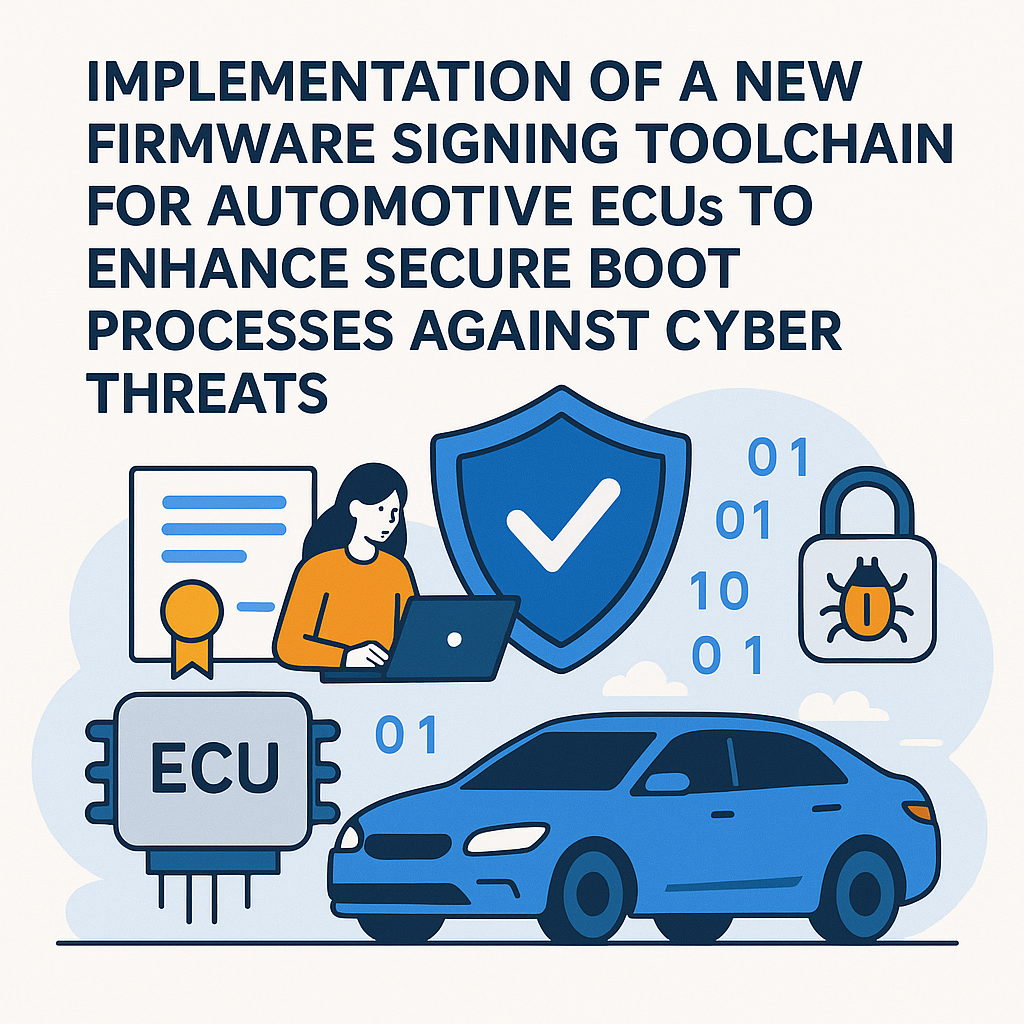Introduction
In today’s automotive landscape, the security of electronic control units (ECUs) is paramount. As vehicles become increasingly connected, the risk of cyber threats looms larger. One effective way to bolster security is through the implementation of a new firmware signing toolchain for ECUs, which enhances secure boot processes. This post delves into the significance of this toolchain, its implementation, and its impact on automotive security.
The Importance of Secure Boot Processes
Secure boot processes are essential for ensuring that only authenticated and verified firmware is executed during the system’s startup. This is crucial for preventing unauthorized access and ensuring the integrity of the vehicle’s systems. Here are some key points regarding secure boot:
- Protection Against Malware: By validating firmware signatures, secure boot helps prevent the execution of malicious software that could compromise vehicle safety.
- Integrity Verification: Secure boot ensures that only trusted firmware is loaded, maintaining the integrity of the ECU.
- Compliance Requirements: Many regulatory frameworks require secure boot capabilities as part of their cybersecurity mandates.
Challenges in Current Firmware Signing Processes
Many automotive manufacturers face challenges with their existing firmware signing processes, including:
- Scalability: Traditional methods may not scale well with the increasing number of ECUs in modern vehicles.
- Complexity: Existing systems can be complicated, leading to potential human errors during signing and deployment.
- Performance: Slow signing processes can delay firmware updates, impacting the vehicle lifecycle.
Key Features of the New Firmware Signing Toolchain
The implementation of a new firmware signing toolchain can address these challenges and enhance secure boot processes significantly. Here are some key features:
- Automated Signing: The toolchain automates the signing process, reducing the risk of human error and speeding up firmware deployment.
- Scalable Architecture: Designed to handle a growing number of ECUs, the toolchain supports the increasing complexity of modern vehicles.
- Advanced Cryptographic Techniques: Utilizes state-of-the-art cryptographic algorithms to strengthen the security of the signing process.
- Integration with CI/CD Pipelines: Seamlessly integrates into continuous integration and continuous deployment (CI/CD) workflows, enabling rapid updates and testing.
Implementation Steps for the Toolchain
Implementing the new firmware signing toolchain involves several key steps:
- Assessment of Existing Systems: Evaluate current firmware signing processes and identify areas for improvement.
- Toolchain Selection: Choose the right tools and technologies that align with your organization’s needs.
- Integration Planning: Develop a plan for integrating the new toolchain into existing workflows.
- Training and Development: Provide necessary training for development and operations teams to ensure a smooth transition.
- Testing and Validation: Rigorously test the new toolchain to ensure it meets security and performance requirements.
- Deployment: Roll out the toolchain across all relevant ECUs and monitor its performance.
Impact on Cybersecurity
The new firmware signing toolchain has a profound impact on automotive cybersecurity:
- Enhanced Security Posture: By ensuring that only verified firmware is executed, the toolchain significantly reduces the attack surface.
- Faster Response to Threats: Automated signing processes enable quicker updates to protect against newly discovered vulnerabilities.
- Greater Consumer Confidence: With stronger security measures in place, manufacturers can assure consumers that their vehicles are safer from cyber threats.
Conclusion
As the automotive industry continues to evolve with technology, the need for robust cybersecurity measures becomes increasingly critical. The implementation of a new firmware signing toolchain for ECUs is a strategic move that enhances secure boot processes and fortifies defenses against cyber threats. By addressing existing challenges and providing a scalable, efficient solution, this toolchain not only improves security but also ensures the integrity of modern vehicles. As we look to the future, investing in such innovations will be key to safeguarding the automotive ecosystem.



